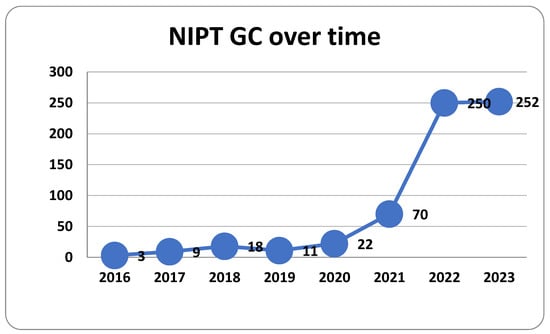Since its introduction in 2011 [8], the commercialization of NIPT has significantly enhanced our ability to detect risks for chromosomal aneuploidies at an earlier stage [25]. While convenient, fetal sex identification may create difficult situations for parents and prenatal care providers [5]. The two cases represent a higher frequency than those in the significant study by Dhamankar et al., i.e., 0.007% (p < 0.00001), and the review by Smet et al. [26,27]. Although intriguing, this difference might be related to US performance, among other reasons, and is outside the scope of our study. Such discrepancies would understandably cause significant anxiety and stress for expecting parents. As a first step in both cases, we recommended a repeated US. Our first case was resolved since the second assessment aligned with NIPT results. However, ongoing follow-up care until and after the child is born is considered essential, even in such cases. Maternal contamination, different types of mosaicism, and the exclusion of vanishing twins may also be necessary to investigate if US findings continue to contradict the NIPT results. Postnatal cytogenetic analysis can be applied if suspicion of ambiguous or discrepant sex exists. Additionally, cases of potential disorders of sexual development (DSD) or other likely conditions should be confirmed through appropriate genetic analysis [26,27]. Since the classification of these disorders is immensely wide and diverse, careful clinical care must be implemented for the diagnosis, management, and monitoring of children with a confirmed DSD. As many also affect other systems and organs, the clinical approach must be multidisciplinary. Additional genetic counseling may be necessary for hereditary cases, along with ongoing psychological aid and participation in patient support groups.
Source link
Dinnar Yahya www.mdpi.com


